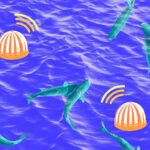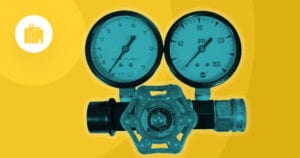
According to the International Union for the Conservation of Nature (IUCN), the number of threatened animal species rose globally from around 10,000 in 2000 to over 25,000 in 2018. As poaching networks become increasingly organized, aggressive and armed, it’s imperative for conservation efforts to shift toward becoming more predictive rather than reactive. This shift can be seen in a number of wildlife conservation projects that have developed innovative IoT solutions to directly combat the rising number of poaching incidents.
Enlisting the Help of Herd Animals
For the past five years, African rhinos have been killed by poachers at a rate of three per day, which could mean rhino extinction by 2025. Rhino horns are illegally traded for their alleged medicinal properties, which scientific studies have disproven, and can sell for more than gold or diamonds on the black market.
Welgevonden is a private game reserve in South Africa that spans roughly 90,000 acres and has one of the largest populations of rhinos in Africa. In order to curb rhino poaching, Welgevonden teamed up with Wageningen University and IBM to develop a novel IoT solution that shifts the focus from tracking rhinos to monitoring herd animals like zebras and impalas.
According to a study performed at Wageningen University, animals demonstrate different movement patterns in response to the type of threat they are facing. For instance, animals move as a herd when approached by a natural predator like a lion, but they tend to scatter chaotically when confronted with a human poacher.
These behavioral changes can be detected by fitting animals with sensor-equipped collars that collect information regarding their location, direction, and average speed. These collars use LoRa technology and send data to IBM’s Internet of Things where it is then analyzed to identify animals in distress and inform the reserve team.
Welgevonden takes the unique approach of strategically putting the collars on herd animals rather than rhinos. Herd animals (like zebras, elands, wildebeests, and impalas) exist in greater numbers on the reserve than rhinos and are not the main target for poachers.
Therefore, these collared herbivores act as an early warning system that increases the chances of park rangers identifying poachers before they encounter a rhino. The predictive nature of this approach allows park rangers to act proactively, making it much more effective than conventional IoT solutions which directly track the endangered species.
Securing the Perimeter
While Welgevonden’s solution is highly effective, it is dependent on a connection to the cloud across vast areas of land, making it nearly impossible in certain terrains in Africa. Connected Conservation is an alternate IoT solution, that protects endangered species by tracking people crossing the perimeter of private reserves rather than the animals themselves.
Connected Conservation’s security system is located in South Africa and uses a “reserve area network” (RAN) that relies on fixed towers covering the entire perimeter of the reserve. At the four reserve entry points, remote networking systems track every person that is entering and exiting with biometric scanners and cameras.
Along the perimeter, networked thermal cameras and fiber-optic acoustic sensors detect boundary breaches. All of this data is inputted into an analytics system that detects patterns of activity and generates alerts for the armed ranger team to intercept intruders in real-time.
The installment of this system demonstrated impressive success. In 2015, there was a 96 percent reduction in the number of poached rhinos on the reserve and in 2017, not a single rhino was poached. Connected Conservation is planning to expand its efforts in the future and hopes to combat the rapidly declining elephant population in Zambia.
Citizen Science to the Rescue
Dugongs are marine mammals, commonly known as sea cows, that are found throughout the Indian and Pacific Oceans. They are listed by the World Conservation Union (IUCN) as a species vulnerable to extinction, largely due to illegal hunting. This ecologically important species often live in remote areas and are shy animals, making them challenging and expensive to study.
In an effort to save this animal from extinction, Smart Earth Network (SEN), in partnership with marine conservation non-profit Community Centred Conservation (C3), has launched a “citizen science” conservation project that allows local fishermen in the Philippines to monitor and track dugongs. Using smartphones supplied by a local mobile provider and an app developed by SEN, fishermen can photograph any dugongs that they spot at sea and then upload these geo-located images to a central database hosted on the Kii Cloud when they return to land.
These crowdsourced data points are then analyzed to get a more accurate estimate of the dugong population size, gain insights on migration patterns, and establish an informed plan for protecting the species. This conservation project is one of the first initiatives that employs smartphone technology and, if it is proven to be successful, could have important applications for monitoring endangered species that live in remote parts of the world with limited resources.
While these three projects are still in their early stages, they each present a unique approach to animal conservation and demonstrate the potential of IoT applications in protecting endangered species. In the future, these initiatives can hopefully expand their efforts to combat poaching all over the globe.





 Related Podcast Episode
Related Podcast Episode




 Related Applications
Related Applications


 Latest IoT News
Latest IoT News








